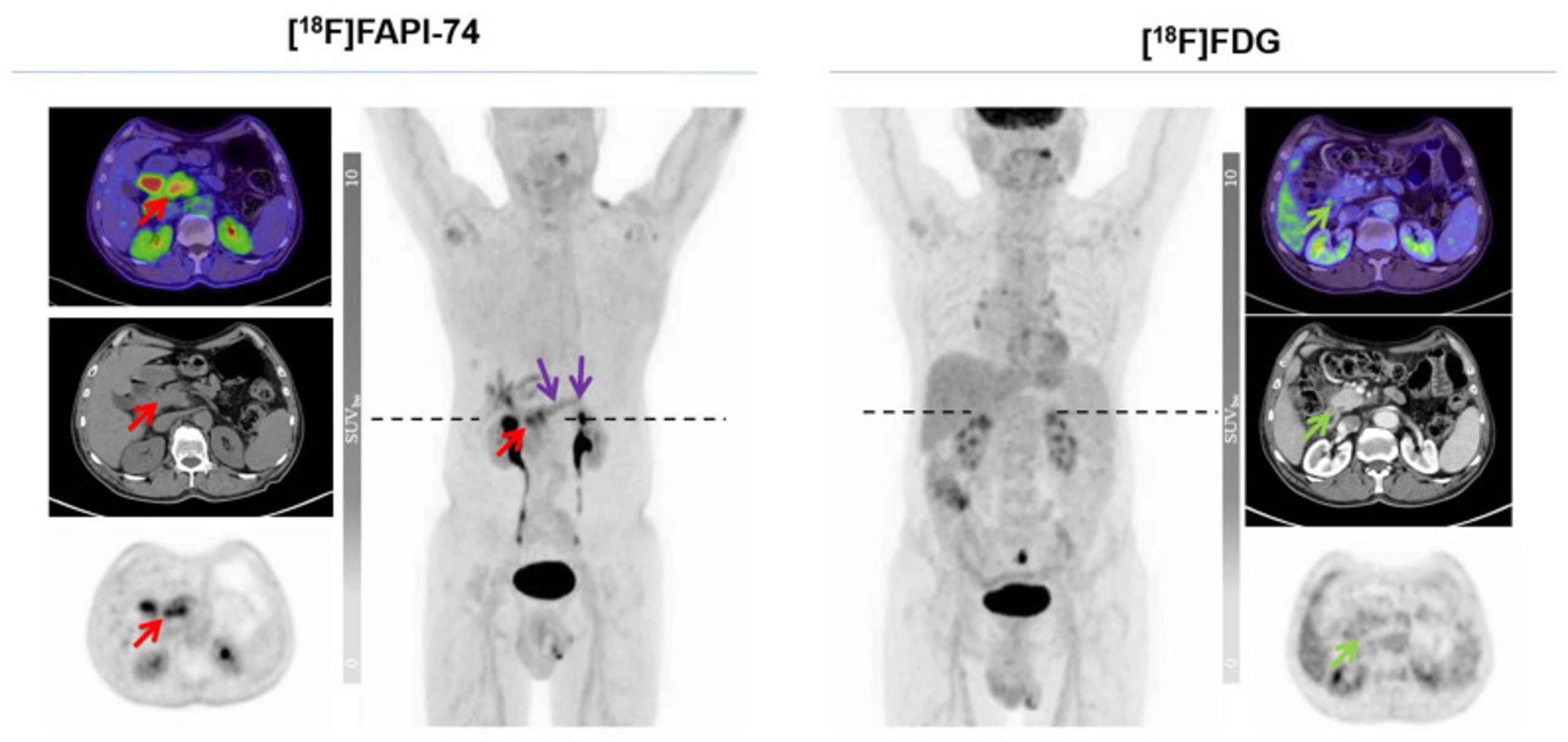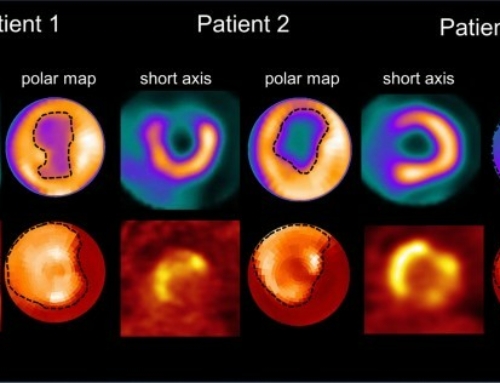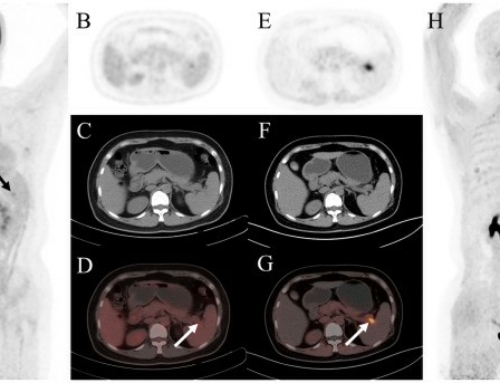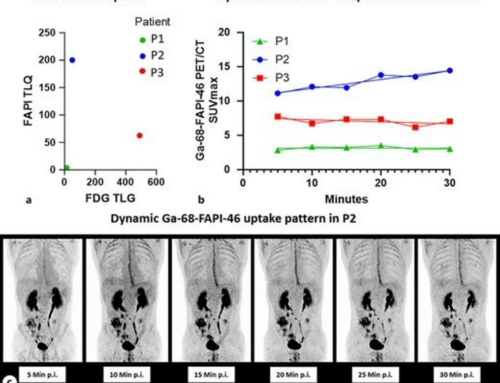Emil Novruzov1, Frederik L Giesel1,2, Yuriko Mori1, Peter L Choyke3, Mardjan Dabir1, Eduards Mamlins1, Dominik Schmitt1, Christina Antke1, Claudio Pinto4, Cristian Soza-Ried5,6, Rene Fernandez5, Horacio Amaral5,6, Vasko Kramer5,6, Leonardo Badinez7
Abstract
Background: Radiolabeled fibroblast activation protein (FAP) ligands, a novel class of tracers for PET/CT imaging, have demonstrated very promising results in various oncological, as well as in some benign, diseases with long-term potential to supplant the current pan-cancer agent [18F]FDG in some cancer types. Pancreatic ductal carcinoma (PDAC) belongs to the group of epithelial malignancies with a strong so-called “desmoplastic reaction”, leading to a prominent tumor stroma with cancer-associated fibroblasts that exhibit a marked overexpression of fibroblast activation protein (FAP). The first clinical experiences in PDAC with 68Ga-labeled FAP ligands suggested superior sensitivity to [18F]FDG. However, there is limited data with 18F-labeled FAP derivatives, i.e. [18F]FAPI-74, yet prospective single- and multicenter trials are already ongoing. In this proof-of-concept study, we sought to evaluate the biodistribution, tumor uptake, and lesion detectability in patients with PDAC using [18F]FAPI-74 PET/CT as compared to [18F]FDG PET/CT scans for staging.


![Efficacy of [68Ga]Ga-FAPI-PET as a non-invasive evaluation method of liver fibrosis](https://sofie.com/wp-content/uploads/2025/06/info.ibamolecular-500x383.png)
![Comparison of [99mTc]Tc-FAPI SPECT/CT and [18F]FDG PET/CT as predictive biomarkers for immunotherapy response in gastrointestinal cancer](https://sofie.com/wp-content/uploads/2025/06/info.ibamolecular-500x383.jpg)


